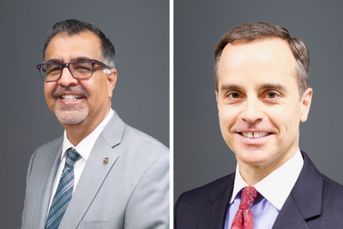Two-thirds of peak boomers are facing a retirement cliff

With an unprecedented wave of Americans set to retire, an analysis points to a looming generational crisis.
A majority of Americans who are set to retire between 2024 and 2030, known as peak boomers, are not adequately prepared financially, according to a new study commissioned by the ALI Retirement Income Institute.
The analysis by Robert J. Shapiro, former undersecretary of Commerce for economic affairs, highlights the economic challenges faced by the youngest and largest segment of the baby boomer generation.
The study projects that 30.4 million Americans will turn 65 by the end of this decade, marking a substantial demographic shift. Shapiro’s findings indicate that two-thirds of these individuals may struggle to sustain their current lifestyles post-retirement.
With 52.5 percent of them possessing assets of $250,000 or less, the majority are likely to deplete their savings and rely primarily on Social Security, which is supposed to replace just about 40 percent of an individual’s pre-retirement income. Another 14.6 percent with assets between $250,000 and $500,000 also run the risk of straining to meet their retirement needs.
“America has never seen so many people reaching retirement age over a short period, and well over half of them will find it challenging to meet their needs through their retirements, let alone maintain their current standard of living,” Shapiro said in a statement.
The study also sheds light on the disparities in retirement readiness across different demographics. Median retirement savings stand at $225,000, yet there’s a noticeable variation across gender, race, and education levels. For instance, men have a median of $269,000 saved, compared to $185,000 for women.
Racial gaps are even more pronounced, with white retirees having significantly higher median retirement savings ($299,000) compared to their Black ($49,000) and Hispanic ($123,000) counterparts. Educational achievement also plays a role, with median savings for college graduates ($591,000) eclipsing the savings of high school graduates ($75,000) and those who didn’t finish high school ($7,000).
“The saving grace for some peak boomers is that they can count on the added protected income that a pension provides in retirement,” said Jason Fichtner, executive director of the ALI Retirement Income Institute, who’s also the chief economist at the Bipartisan Policy Center.
One-quarter of that cohort (24 percent) have defined-benefit plans, with a nearly even split between DB plans provided by private employers and those from state and local governments. But 2022 data suggest public DB plans are more generous, providing a median annual benefit of $25,450 compared to $17,640 for private ones.
“However, since only 4% of all private-sectors workers had protected income from a pension as recently as 2020, this economic study of peak boomers should be a cautionary tale to all Americans planning for retirement,” Fichtner said.
Retiring baby boomers forcing changes in target-date funds
Learn more about reprints and licensing for this article.








